How to make a warm pre-bath in the bath?
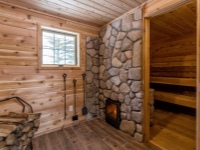
Construction of a bathhouse on the homestead plot - a trend that has long been firmly established in landscape design when planning the territory at your own house, suburban mansion and even on the small space of a cottage plot. And a warm pre-bath - it is an opportunity to undress and get dressed in comfort, without gusts of cold air, the risk of catching a cold, inevitable without the precautions after the heat.

Features
A bathhouse is so much fun: the steam room or the washing room, the release of toxins from the body with sweat, the massage with natural brooms, the change in temperature, the feeling of cleanliness and lightness.
Usually, when properly arranged, in a large-area bath do a small pool, in a small one - a relaxation area where you can talk and drink tea, from here you can carry out the furnace of the main room. Planning the pre-bath - an event no less responsible than the arrangement of the steam room, outdoor insulation, ventilation and exterior design.
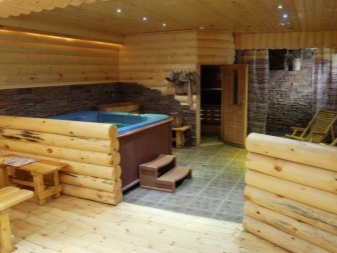
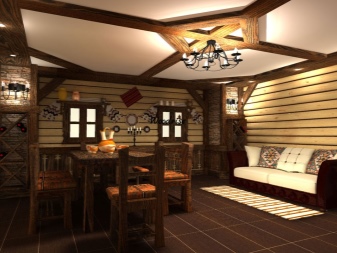
Zealous owner in drawing up a scheme of construction and the plan for further action should take into account several key points, to find answers to many questions, and all this - taking into account their financial capabilities, style preferences:
- styling - Warm and bright Russian, Turkish exotic, ascetic yacht, minimalist Scandinavian;
- how to insulate a pre-bathroom - inside or outside, problems with the door and fresh air flow, with the ceiling and floor;
- insulation used - polymer, familiar mineral derivatives, wood, heating structures with circulation and heated water or air supply mechanisms;
- furniture arrangement, lighting, convenience, the maximum number of visitors for which the room is designed.
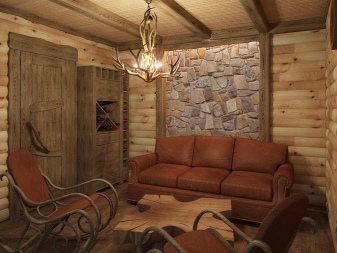
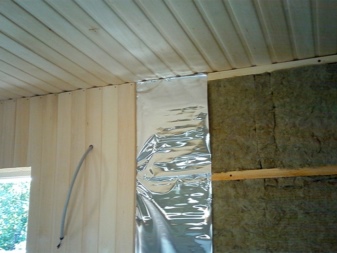
Ready-made solutions, design projects published on special sites, may for some reason be unsuitable. This can be hampered by limitations in furniture (standard set - a bench, a table and a coat rack), the assumed size of the pre-bath designed for a larger number of visitors. Self-design is fraught with small and large troubles because of unprofessionalism, lack of basic skills, knowledge about the insulation and heating methods.
According to professional builders, you must necessarily take into account all the negative factors - Condensation from temperature differences, cold streams, creating conditions for cold and damage to the finish, emissions from the furnace, if it is dislocated in the anteroom. All this should not interfere with the main purpose of the space between the steam room and the outside - the area needed for maximum comfortable rest. At the same time it is necessary to take into account quality ventilation and absence of draughts, safety and efficiency of the furnace if it is located in the anteroom.
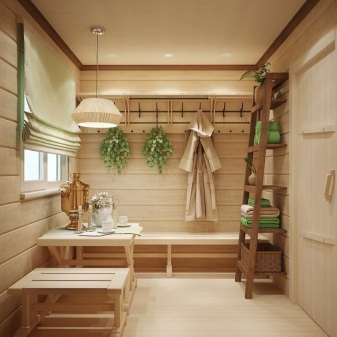

The optimum temperature should not make you want to get dressed immediately or go back into the steam room, but should not make you want to go outside to cool down or get a breath of fresh air. To prevent negative moments are provided in advance the use of a certain type of insulation, options for floors, walls and the choice of heating.
If the construction is done with your own hands, you should not choose the most complex and expensive options that require considerable knowledge in the field of energy conservation.
It is better to turn to simple, but proven and effective methods, about which you know more, and for the realization of the idea requires less equipment, technological complexities, financial costs.
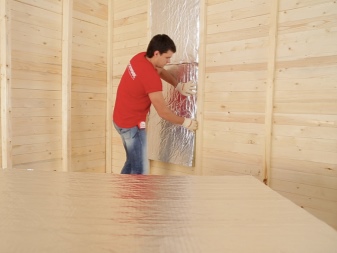
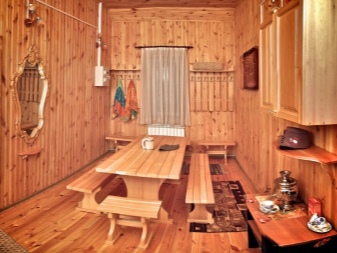
Types of insulators
It is known that there is no perfect insulators - each of them has its weighty pros and no less tangible cons. Insulation from the inside of a specific room assumes that the material used has at least 3 valuable qualities - moisture resistance, fire safety and environmental friendliness. In modern conditions, the construction of baths can be carried out of wood, bricks, foam and cinder blocks, other modern materials that have thermal insulation properties at standard temperatures. However, in frosty weather, with a significant difference between the temperature inside and outside, freezing can occur, the result of which is the unaesthetic appearance of the interior due to the appearance of stains, drips, blurred formations.
Insulate the ceiling, the floor, additional insulation of the walls is necessary - you need separate methods and techniques. The walls are most often laid with mineral wool, foam or fiberglass.
This is a simple and economical way of vapor barrier, protection from cold air flows.
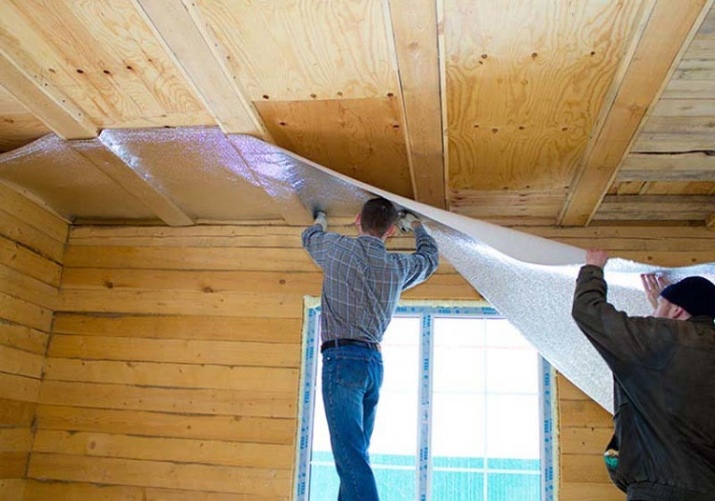
Mineral wool
Extremely affordable insulation, for many years leading the ranking of demand among consumers with different levels of income. It has all the necessary properties: chemical and biological resistance, fire safety, the ability to reliably insulate against noise, frost, retain heat, not to be deformed by significant temperature fluctuations. As special bonuses - the ultimate ease of installation and low cost.
There are also some disadvantages - Some types are not resistant to moisture and require additional installation of waterproofing. To obtain the desired effect, a thin layer of padding is not enough, so when using mineral wool, you have to take into account the need for additional space for its placement.
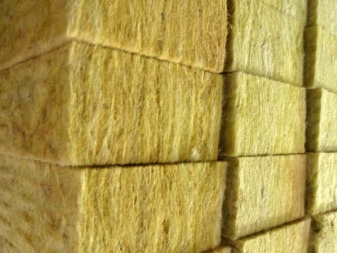

Fiberglass .
Insulation, for more than a century and a half firmly holding the top lines in the ranking of construction materials due to its unique characteristics. This is the general name for all varieties made of quartz sand or broken glass. Identity of the original material implies similar advantages and disadvantages: resistance to the destructive influence of chemical compounds melting, combustion (fire safety), low thermal conductivity (the ability to retain heat in the room without special costs).
Fiberglass mats can be plastered, the use of roll version involves covering with finishing materials, in the case of the pre-bath - clapboard or boards.
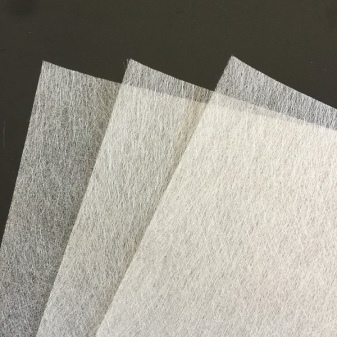
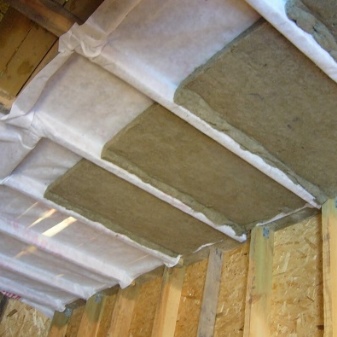
Styrofoam
With equal probability can be used to insulate walls, floor with a concrete screed. Immediately after laying waterproofing is laid a layer of foam, reinforcing mesh, adhesive and ceramic tiles. Universal use since the middle of the last century has proven all the undeniable benefits of polymer for the steam room, pre-bathroom - insulation of the walls and floor, insulation of the supporting structure
Correct choice of insulation may involve a variety of material depending on the segment to be insulated. For example, fiberglass for the walls, and foamlex insulated warm boardwalk floor - water or electric. How to insulate a door that necessarily opens inside the room, you need to decide taking into account its thickness, manufacturing materials, the configuration of the casing and the thickness of the wall slab, locking devices.
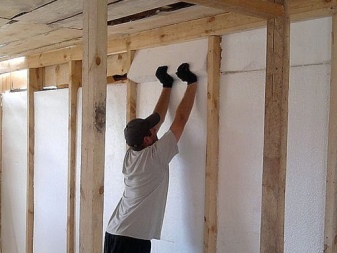
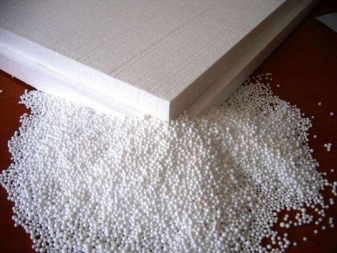
Options for underfloor heating
Developed types leave the organizer of the bath the most variable opportunities - simple, complex, costly in money and time, not very troublesome and capital.
Water
The undoubted advantage is the ability to use hot water, already heated to the desired temperature and fed into the steam room, or already used, but still hot, when removed from the main room. The disadvantages include the complexity of installation.
Only the presence of special knowledge and skills can do without the services of specialists in installation.

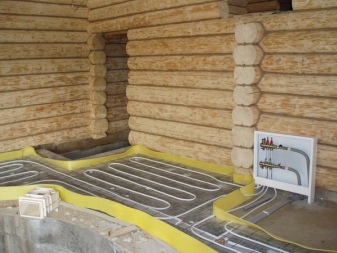
Electric
More expensive, but much less complicated way to heat the floor in the anteroom. In the rating of popularity is sometimes not inferior to the water system because of the ease of installation, especially if you use a film version. Its installation requires neither a cement screed, nor a special type of coating. Safety and speed, the ability to use any elements of style design (from parquet and laminate to carpet and tile) - these are the main advantages.
Of the disadvantages - only the cost of electricity.
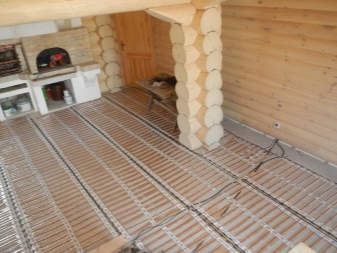
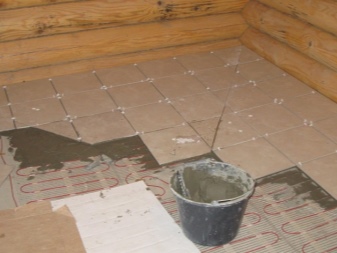
Cable
A less popular variety of floor heating on electrical energy. The subtleties of installation and installation of the coating depend on the type of cable used, heating sections or cable coils.
For those who do not have skills in working with such devices, it is recommended to invite installation specialists.
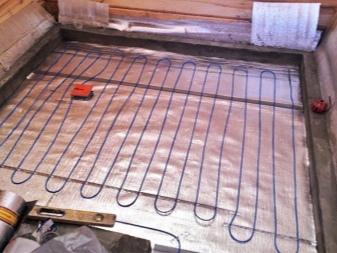
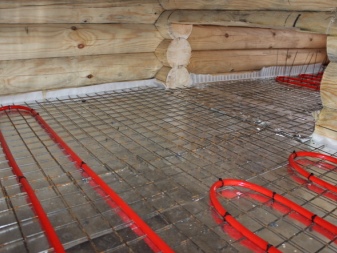
Infrared
The type of floor heating that uses infrared waves is characterized by almost 100% heat output, no harm to health, extremely simple installation principles and impossibility of simultaneous damage.
Recommended for any type of room.

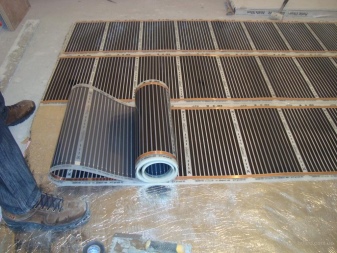
Choice of heating
Before the builder of the bath opens a wide range of heating systems, but with the subject of preference should be determined still in the planning of the construction. It is the heating that determines the design of the anteroom and the steam room. To heat the functional room is decided in such a way that at a minimum expenditure of money and time the effectiveness was at a high level.
- Bath stove allows you to produce simultaneous heating of the steam room and the pre-bath. Its proper arrangement will give a high temperature in the steam room, and the anteroom - to warm up to comfortable conditions.
- Insulation with a warm floor, additional insulation of the ceiling and walls requires taking into account some circumstances - for example, that in winter the heaters are preferable to the floor on the water pipes. In severe frosts, there is a risk of bursting, even if they are filled with brine.
- The heater can work in 3 ways - from a common stove, a separate one installed for the anteroom, a water or steam circuit. But many people think it is better to use infrared or electric floor heating.
Air heating can effectively maintain the temperature already created, but it is not very suitable for creating the necessary atmosphere in a cold room.
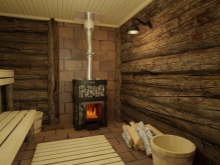
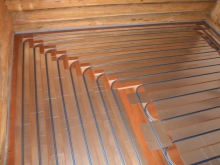
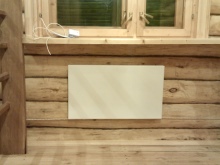
How to insulate with your own hands?
You just need to properly do all the necessary steps - from the preliminary preparation to the style of the already finished design. Having decided on the project, start working with the selected means.
- Stuff the door with a wooden bar, put insulation, make plywood paneling, roll insulation and fill all the gaps with installation foam. As an option, you can foresee in the project the second door or install a double chamber.
- The floor inside the room can be insulated with moisture-resistant boards with a good layer of insulating material. Apply any of the above heating technologies - with water, infrared, electric or cable heating.
- Insulate the ceiling with foamed polystyrene, polystyrene foam, polystyrene in plates by calculating the thickness using a heat insulation calculator.
- Walls paneled or covered with plaster (if they are made of brick, additionally insulated from the outside).
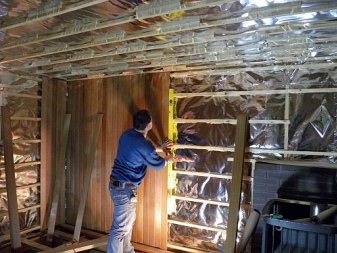
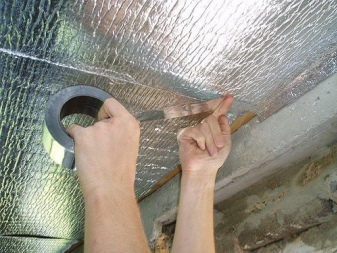
Proper insulation and comfortable use of the pre-bathroom is also achieved by the correct choice of the heating device and the selection of furniture installed in the interior at the right distance from the main source of heat.
If the construction is done with your own hands, you should not choose the most complex and expensive options that require considerable knowledge in the field of energy conservation. It is better to turn to simple, but proven and effective methods, about which more is known, and for the realization of the idea requires less equipment, technological complexities, financial costs.
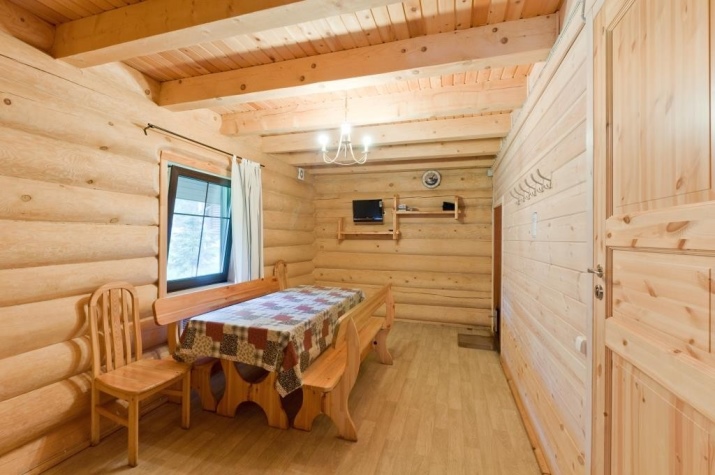
About a simple way to heat the pre-bath adjacent to the steam room, you can learn from the video below.




